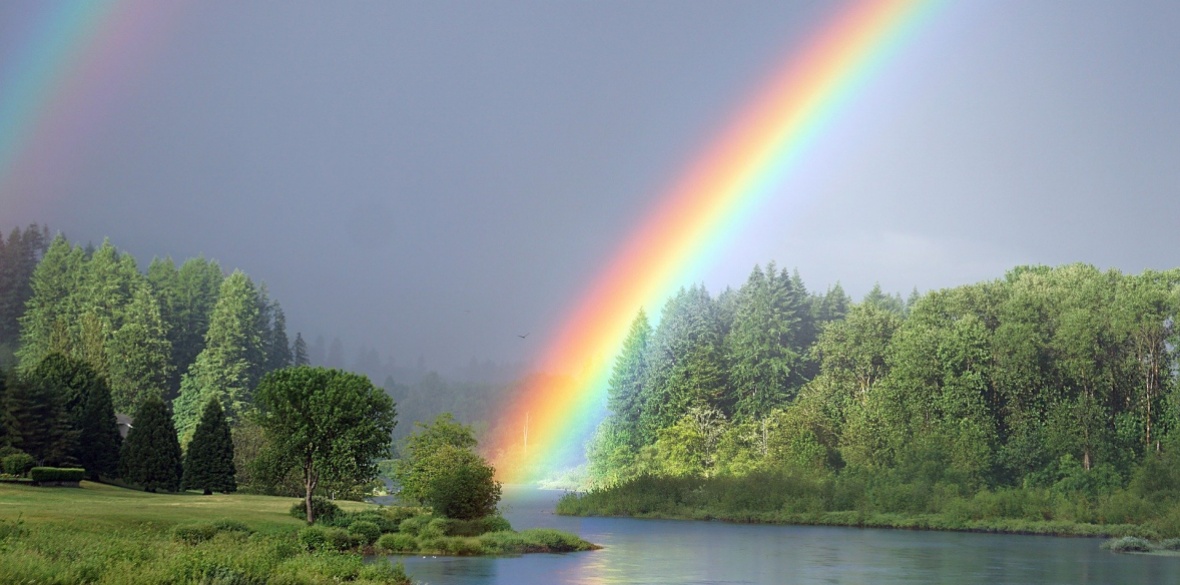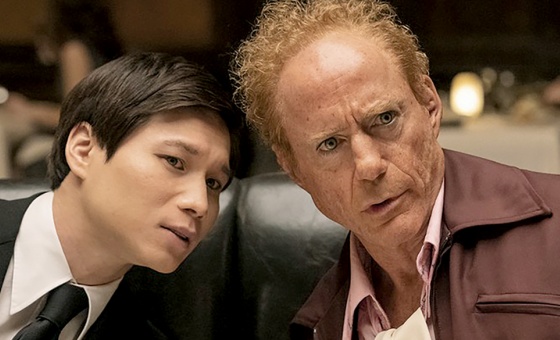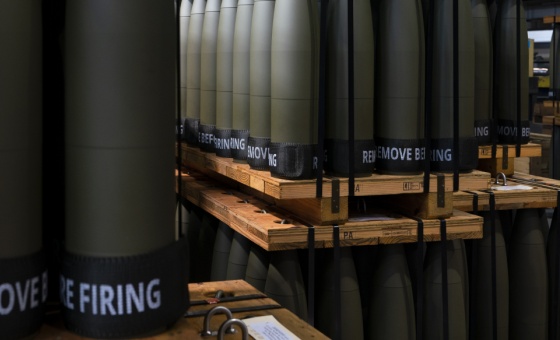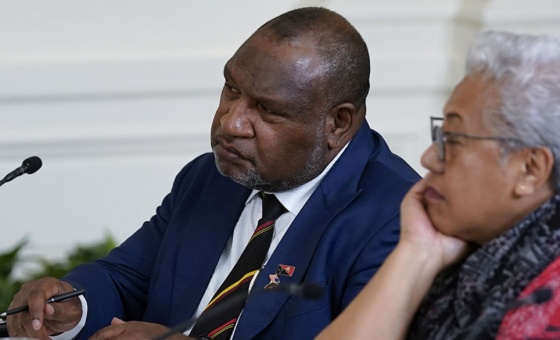This is the last article you can read this month
You can read more article this month
You can read more articles this month
Sorry your limit is up for this month
Reset on:
Please help support the Morning Star by subscribing here
WITHOUT doubt one of the things that has most cheered me in these generally dark days of the coronavirus has been the thousands of children who have made pictures and posters to thank the heroes of our amazing National Health Service.
Virtually every one of them has used that most inspiring of symbols — the rainbow.
One or two families have gone over the top a wee bit with the rainbow. Some have chalked the entire front of their house in rainbow colours and at least one has enshrined his rainbow thanks by painting the house front with long-lasting rainbow stripes in exterior paint.
Our own news pages here at the Morning Star have featured floral rainbow arches at hospital entrances and colourful murals and posters again using those distinctive colour bands.
My own son and daughter-in-law are busy volunteers opening some of the tens of thousands of cards sent to remarkable centenarian, chart-topping and NHS champion Captain Tom in Bedford.
They tell me many of the cards as well as including cash and cheques feature a rainbow somewhere in their design or message.
However it is used, the rainbow is an inspiring image and one that never fails to lift the spirit just as the real thing does on a sunny and rainy day.
I thought it might be worth looking into the history of this rainbow image and the many great causes it has been linked with down the centuries.
Many Star readers will perhaps associate it with the gay-pride flag, first proudly flown in 1978.
We’ll come back to that rich history later, but I think I need to start in the 16th century and the German peasants’ war.
This was a widespread popular democratic revolt from 1524 to 1525. It took place in some German-speaking areas of what is now Germany and the Alsace.
The workers had two symbols, the rainbow flag and the worker’s boot, both held aloft in skirmishes with the paid and well-equipped armies of the aristocracy.
These armies, with both artillery and well-drilled infantry, slaughtered up to 300,000 poorly armed peasants and farmers fighting bravely under that rainbow flag and symbolic boot.
That boot was called the Bundschuh and to the peasants it was the sign of a new era of hope and social change. Sadly, it was not to be.
The revolt was put down and the rainbow banner trampled in the German soil.
Over many years Andean Incas demanding independence from Bolivia and Peru adopted the rainbow flag and it has appeared in other South American independence struggles too.
Thetford, Norfolk-born Thomas Paine was author of the Rights of Man and a key participant in both the French Revolution and the American Revolution, the war of independence against British colonial rule.
One commentator summed up Paine’s life as “a corsetmaker by trade, a journalist by profession and a propagandist by inclination.”
Paine, on the side of the Americans, was in charge of shipping when American and British fleets were blasting each other with cannon.
Paine needed a way that neutral and peaceful shipping could identify itself. You guessed, he got them to fly that rainbow flag.
Nearly a century ago, in 1921 in Essen, Germany, shortly after the first world war, the International Co-operative Alliance (ICA) designed an international co-op symbol and a flag for the first Co-operators’ Day, which was held in July 1923.
After some experiments with different designs, a famous French co-operator, Professor Charles Gide, suggested using the seven colours of the rainbow for the flag.
He pointed out that the rainbow symbolised unity in diversity as well as the power of light, enlightenment and progress.
The co-op rainbow flag was created in 1924 and was adopted as an official symbol of the international co-operative movement in 1925 to identify and to define the growing co-operative movement’s common values and ideals to help unite co-ops around the world.
Today the flag has changed but the co-operative movement, including the Woodcraft Folk still love their rainbows.
Since 1978, the rainbow flag has become best-known as the symbol of gay pride.
Artist Gilbert Baker invented it in San Francisco in 1978. Baker was an openly gay activist born in Kansas in 1951.
It would not be until 2003 that homosexuality would become legal across the entire US.
After an honourable discharge from the US army around 1970, Baker taught himself to sew.
In 1974, he met influential gay activist Harvey Milk. It was Milk who asked Baker to come up with a symbol of pride for the gay community.
Up to this time the most common gay symbol was the pink triangle, ironically borrowed from the nazis who used it to mark out homosexuals in the same way Jews were forced to wear the yellow Star of David.
Milk and other gay leaders didn’t want to use this nazi symbol any more. Artie Bressan, a close friend of Baker’s, pressed the artist to create a new symbol to introduce “the dawn of a new gay consciousness and freedom.”
Baker may have been inspired by the death of one of the very first gay icons, Judy Garland, and her song Somewhere over the Rainbow. Garland died just a few days before the New York Stonewall riots.
Another inspiration may have been the flag flown at some US college campuses during the 1960s.
Those demonstrating for world peace would carry the Flag of the Human Race with five horizontal stripes red, white, brown, yellow.
Baker’s flag first appeared in public at the San Francisco Gay Freedom Parade celebration on June 25 1978. It was hand-dyed and sewn by 30 volunteers.
By now Milk had, as an openly gay man, been elected San Francisco city supervisor. He was assassinated on November 27 1978, and demand for the rainbow flag greatly increased in his memory.
So much so that a commercial supplier, the Paramount Flag Company began selling a version of the flag using stock rainbow fabric with seven stripes.
Since then the growth and distribution of the flag has been amazing. It hasn’t always been an easy growth.
Baker’s original seven colours included that favourite fashion colour of pride marches — shocking hot pink. Sadly that couldn’t be reproduced accurately with conventional dyes, inks and paints so it was dropped.
Other colours have been added over time but none has become permanent.
Lesbian activists liked purple and turquoise bands that reflected the suffragette colours of Edwardian times.
A black band remembered the too many homosexuals who died as result of the dreadful Aids pandemic. Likewise black and brown bands paid tribute to people of colour, gay and straight who had even more diverse battles to fight.
Since the 1990s, its symbolism has been widened to represent the extended lesbian, gay, bisexual, and transgender (LGBT) and wider still with LGBTQ, LGBT+, LGBT? And no doubt others I have missed.
In 1994, for the 25th anniversary of the Stonewall riots in New York City, a mile-long rainbow flag was created by original rainbow flag artist Gilbert Baker.
After flying the banner Baker cut it into sections that were sent all round the globe.
In autumn 2004 several gay businesses in London were ordered by Tory Westminster City Council to remove the rainbow flag from their premises, as its display required planning permission.
When one shop applied for permission, the planning sub-committee refused the application on the Tory chair’s casting vote.
Labour councillors and then mayor of London Ken Livingstone campaigned against this homophobic ruling and by November the council was forced to reverse the policy.
On June 26 2015, president Barack Obama lit up the White House in the rainbow flag colours to commemorate the legalisation of same-sex marriages in all 50 US states.
I could write an entire article on the history of the gay rainbow flag. It is certainly a tale well worth telling.
In the 1960s the rainbow flag was being used in Italy in a different context. It was first used in a peace march in 1961, inspired by similar multi-coloured flags used in demonstrations against nuclear weapons.
It became popular with the Pace da tutti i balconi (peace from every balcony) campaign in 2002, started as a protest against the impending war in Iraq.
The usual rainbow flag is emblazoned in bold with the Italian word PACE (peace).
Today you can find that same flag with the word “peace” in scores of different languages.
The rainbow has been adopted internationally and is used as widely as a symbol of the peace movement as in the fight for gay liberation.
The Rainbow People’s Party was an offshoot of the Black Panther Party incorporating white supporters of their cause, founded in 1968.
It led to an alliance of the original Rainbow Coalition formed in 1969 between the Chicago Black Panthers, Puerto Rican Young Lords, and poor white Young Patriots Organisation.
It took a class rather than racial position and in 1984 it would be replicated by Jesse Jackson’s National Rainbow Coalition.
Without doubt one of the most despicable homophobic, racist, anti-abortion and generally despicable Trump-supporting groups in the US is the tiny but noisy congregation of the Westboro Baptist Church of Topeka, Kansas.
It is well-known for its provocative and often violent protests at abortion clinics, same-sex marriages, and anywhere gay artists win awards.
The church has provoked and welcomed violence and even bomb attacks on those it hates.
When in 2013 a deserted bungalow came up for sale directly across the road from this so-called church, Aaron Jackson, founder of an organisation called Planting Peace bought the bungalow and volunteers painted the entire building in bright rainbow stripes.
Renamed Equality House, it became a place for volunteers of Planting Peace to live and in 2016 the house also became the growing organisation’s headquarters.
In June 2013, a five-year-old girl set up a stall selling pink lemonade for peace outside the Equality House in order to oppose the church’s message of hate by raising money for love and peace.
The hateful Baptists from over the road attempted to stop her by calling the police and screaming profanities.
Despite, or perhaps because of this open demonstration of hate, she raised $400 from supporters opposed to Church of Hate.
The campaign she started has now raised thousands of dollars for Planting Peace.
In September 2013 the first of many same-sex weddings was held on the lawn of Equality House.
A lesbian couple from Alabama were married by the executive director of the Association of Welcoming and Affirming Baptists.
In October 2013, Equality House was the venue for Drag Down Bigotry a fundraising drag show for anti-bullying programmes aimed to reduce suicide among LGBT youth.
By October 2016, the religious neighbours could take no more. They shot up Equality House and daubed homophobic slurs on the walls.
The graffiti and bullet holes were kept in place, and now visitors to the house are encouraged to write messages of love on the vandalised, but still rainbow-coloured walls.
The house next door has now been purchased and painted in a slightly different set of rainbow colours to indicate its new use as a centre for transgender activism.
Nearly last but not least we must not forget the brave Greenpeace ship the Rainbow Warrior.
Active in opposing whaling and seal-hunting, it moved on to protest against nuclear tests and nuclear-waste dumping.
It didn’t just protest but would put itself and its brave volunteer crew in real danger during campaigns in the late 1970s and early 1980s.
Rainbow Warrior was bombed and sunk in Auckland, New Zealand, by operatives of the French intelligence service (Direction Generale de la Securite Exterieure) on July 10 1985.
The cowardly and illegal sinking resulted in the death of photographer Fernando Pereira.
Finally, when South Africa finally threw off the shackles of the obscenity of apartheid with its first fully democratic election in 1994 Archbishop Desmond Tutu coined the phrase “Rainbow Nation” and Nelson Mandela took it to his heart in the first few months of office.
Mandela proclaimed: “Each of us is as intimately attached to the soil of this beautiful country as are the famous jacaranda trees of Pretoria and the mimosa trees of the bushveld— a rainbow nation at peace with itself and the world.”
On television Tutu spoke of the “Rainbow people of God,” drawing on the Old Testament claim that the first ever rainbow marked the end of the great worldwide flood.
The coloured arc appeared in the sky as the waters started to recede and the dove returned with an olive branch in its bill to Noah’s ark. What a rich source of images – and I haven’t even mentioned that well-known crock of gold.
Truly the rainbow has long been a powerful symbol, used, as I hope I have shown, by many inspiring causes over many, many years, but none of that stops me still getting a lump in my throat when I see a tiny child holding up their carefully hand-drawn rainbow with the “Thank you, NHS” message.
Keep well, keep active and keep that rainbow flying.











